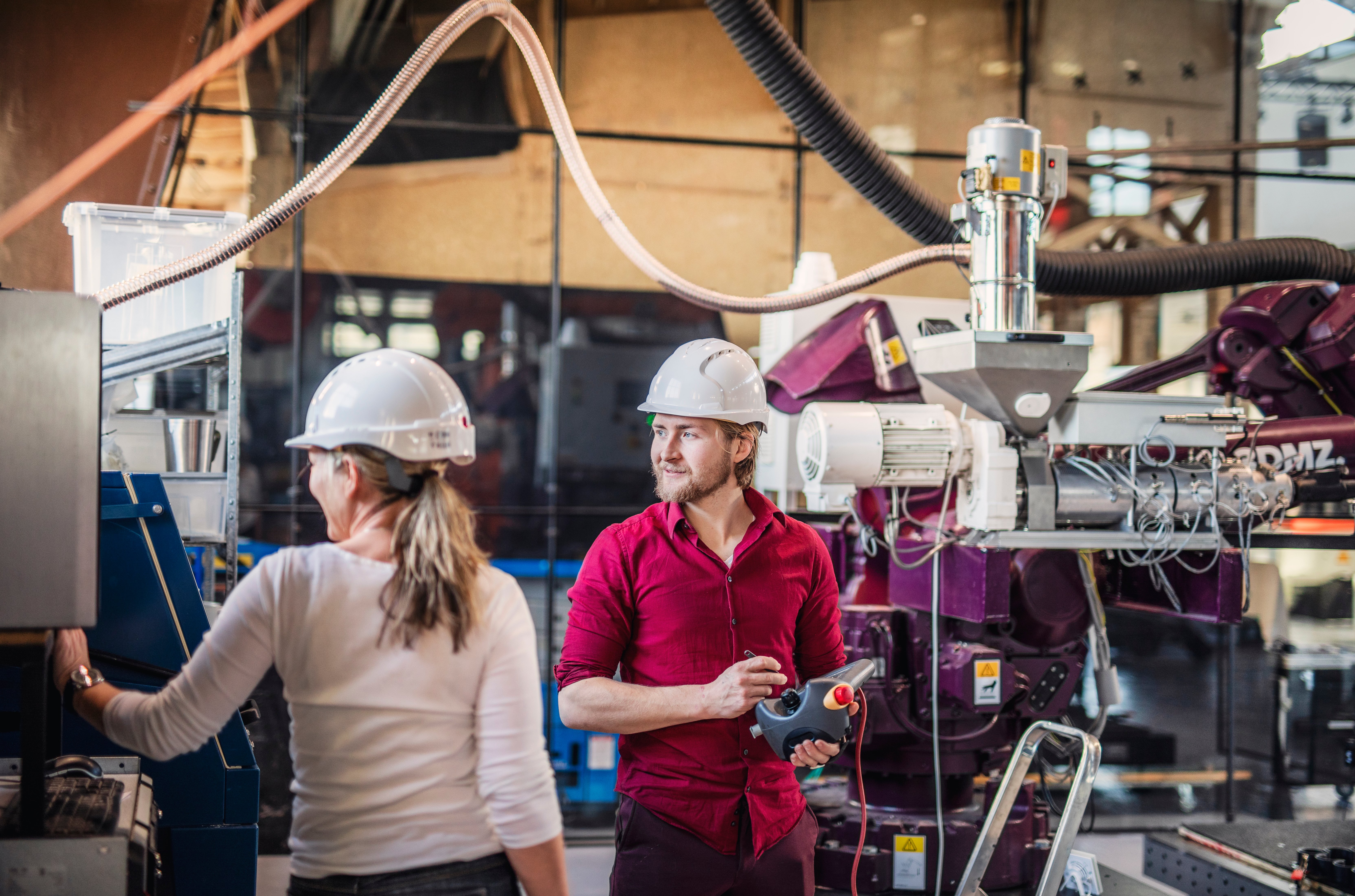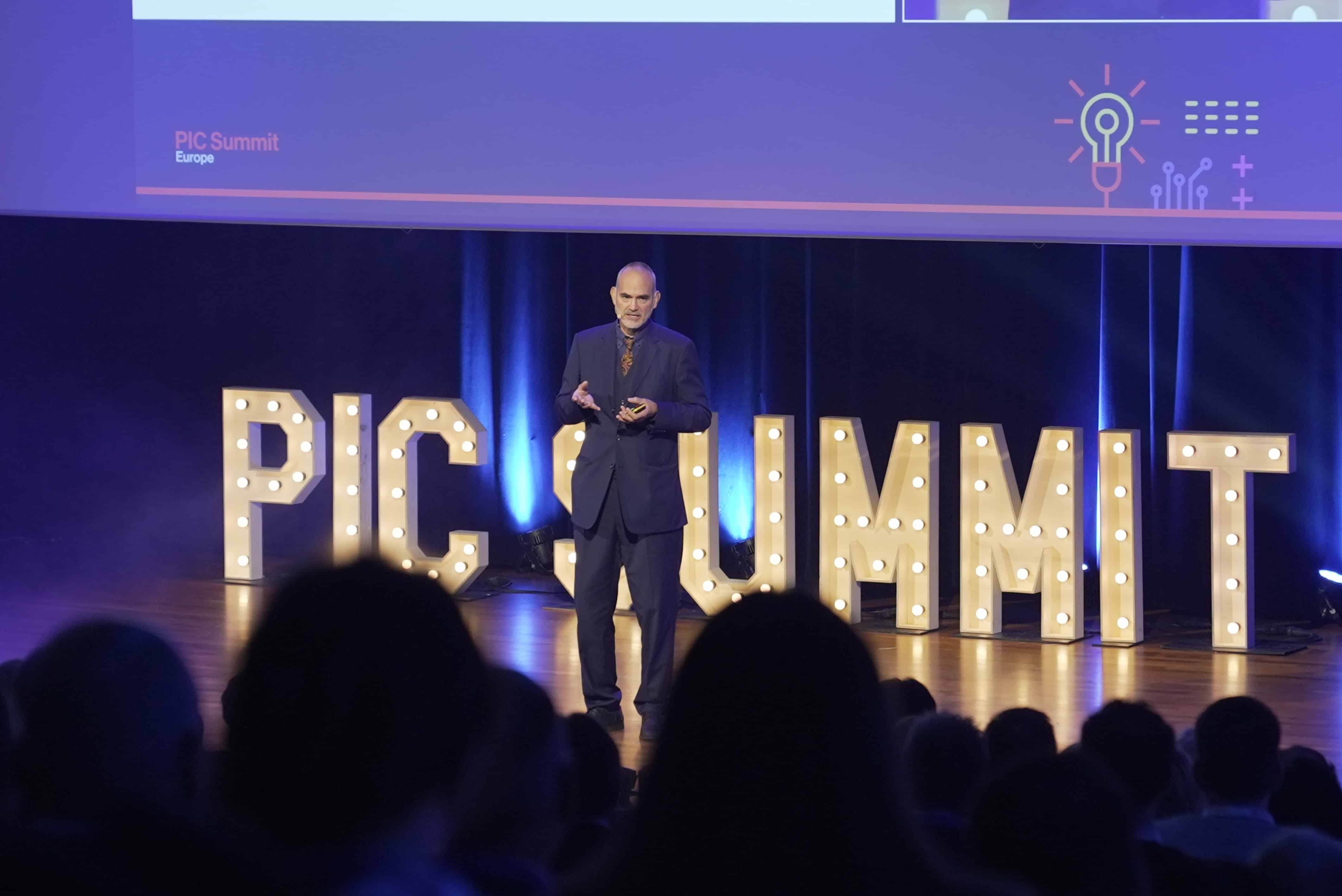
José Pozo is Director of Technology and Innovation, European Photonics Industry Consortium (EPIC) and a noted authority on progress in light-based technologies. He is always on the move, keeping a close watch on developments. On the eve of Photonics West in San Francisco, Jonathan Marks of PhotonDelta took the opportunity to catch up on his latest observations about what needs to happen next in European photonics.
More IO-reporting on the important developments in photonics here
Maybe we can start what’s the significance of two new projects: Inpulse and OIPNWE. What is your take on their significance?
InPulse is an important new programme granted by the European Commission to grow the Joint European Platform for Photonic Integration of Components and Circuits (JePPIX) to a next level. Until now they have been offering Multi-Project Wafer services for Indium Phosphide and Silicon Nitride integrated photonics. JePPIX covers the entire supply chain: Foundry, Software, Custom Building blocks, Design Support, Testing and Packaging. It’s a way for companies to reduce their cost of prototyping photonic integrated chips.
Let me share three points:
- Within a reasonable amount of time, the Jeppix clients can go from an idea to a set of low volume chips. But we need to speed up the process. First of all, the journey from idea to a real chip is long and slow. It’s at least a few years at the moment. I believe that even one year is too long and it is more than that now.
- The second point is the volume. Most of these companies say they have built chip modules with excellent packaging and outstanding specs. But they can only build 100 units a year to this kind of specification.
- Now that might serve the sensor market in Formula One cars. But it is not enough to seriously compete in big markets. 5G is starting to roll out, and photonics is going to play a crucial role in ensuring that the new 5G networks operate with 90% less energy than current 4G networks. And there will be 100’s of millions of devices connected to these networks, so smart antenna designs incorporating fibre to the antenna are essential to building ultra-fast secure networks. I am excited about plans to put photonic integrated circuits into hard disks with Seagate. We are talking about millions of units and there is a strong case for this scale-up to happen in the Netherlands.
From 3 to 4-inch wafers

3-inch wafers 2019
The challenge for Indium Phosphide Foundries
“If we had enough customers to fill the gap now, we wouldn’t need this external funding.”
The problem is that the foundries which can offer the chips are still working with 3-inch wafers (which is the case with SMART Photonics for instance). When you ask them when they will go to 4-inch they say we don’t have a large enough customer base to actually fill the capacity needed to break-even with 4-inch wafer manufacturing.
But this is a chicken-and-egg situation. If we had enough customers to fill the gap now, we wouldn’t need this external funding. But we need to cover the gap in order to offer cost-effective migration to four-inch PIC wafers which is essential if the foundry is going to higher volume.
The need for automated design
Another point. Most of the users who demand volume production of Integrated Photonics chips with Indium Phosphide are working in large volume markets. They want automated design. That’s because they’re used to the CMOS design systems used in designing electronic chips. You don’t need to be an optics physicist to make and optimize the “real estate” on a chip. These customers want the software tools to be fully optimized. So we need to find a way to get some of the top design software providers together with the top chip designers Synopsys, VPI, PhotonDesign, Bright Photonics, VLC and the designers at Fraunhofer HHI and the Eindhoven University of Technology. Put this talent pool together with the goal to come up with the next generation of chip design and optimization tools. Ideally, think along the design lines already created for CMOS. You think about functionality, and from functionality to actual layout design then becomes an automated process. That’s what is going to happen in InPulse. And the third challenge is the packaging. Because we need to find ways of reducing the current high costs of connecting these chips to the rest of the system.
Various opportunities to scale up
Luckily for us, around 18 months ago, the European Commission funded another pilot production line called PIXAPP based at Tyndall in Ireland. A few leading precise tool companies like ficonTEC are busy with the automation and testing of photonic devices. So now the goal of the two pilot lines is to liaise with PIXAPP so that any company that wants to manufacture system modules that use Integrated Photonics chips can get the wafers from an InP foundry. That could be SMART Photonics or HHI, buy the photonic system packaging tools from companies like FiconTEC and have a packaging/assembly facility on site at their own factory for making their product in volume.
We’ve also seen companies like PhIX Photonic Assembly emerging in Twente. That’s very interesting for companies who need to do contract manufacturing of their products.
But take the case of ProDrive technologies for example. They are essentially a highly specialized camera manufacturer. What they need are all the tools to be able to manufacture PIC enabled products in high volume. Imagine if they had a bank of 15 to 20 of these high-tech packaging machines that were processing 40-50 wafers a month from an InP foundry so they are fully capable of producing chips for any kind of LIDAR or 5G Photonics application. That would complement what we’re seeing in Phix Photonic Assembly, Technobis and Tyndall in Ireland. The market is going to require all of them.
What’s your definition of high volume?
For me, everything that goes above production of 1,000 4-inch Indium Phosphide PIC wafers per year, that’s high volume. Because semiconductor factories work with larger 8-inch wafers, it is important to make a fair comparison.
So what has just happened with the start of the InPulse initiative?
I think that InPulse is a development programme which is going to be needed for many years. The European Commission is going to fund the first four years of the pilot-line development for volume manufacturing. After that, the ecosystem should be able to have enough customers to help it grow without further public funding. It is going to require intensive collaboration between several European companies and research organisations. But knowing the level of talent in Ireland, The Netherlands, Germany and France, I am confident that it is going to work.
But we need to look know at funding models to support these photonic manufacturing projects and not just wait until the money from the Commission runs out. There is clearly an industry need. The chip design houses, the foundries, the packaging centres, these are all important businesses.
The semiconductor industry is dominated by several large key players. These are huge international corporations, designing chips in the US or Europe, manufacturing in Asia. The photonics industry in Europe is made up of hundreds of small but very innovative companies. As they scale up production, we need a one-stop shop which can represent the combined manufacturing capabilities of this ecosystem. It needs to approach the long-list of non-photonic companies who would benefit by building next-generation applications using light-enabled technologies. Indium Phosphide is a technology that’s ready to scale. But next-generation chips will combine the capabilities of InP photonics with functionality that is better done with silicon electronics or Silicon Photonics – to make nano-lasers for example.
So what role do you see for PhotonDelta?
I think its members are at the heart of these programmes like PIXAPP, JePPIx, InPulse and OIPNWE. Because these are all efforts to scale up production of the entire PIC production chain in order to take photonics to the next level. That will require a clear coherent offer from an organization like PhotonDelta.
Creating more Digital SMEs
I personally believe we need a photonics digital innovation hub in the Netherlands. I know there are many definitions of what a digital innovation hub should be. In my opinion, it should be a place where any company can go and get independent advice on the further “digitization” of their business. PhotonDelta needs to actively reach out to companies to explain the business opportunities. Because high-tech SMEs need help in understanding the business choices and processes available to keep their company competitive. That means using modern techniques to keep the data and IP safe, and optimizing everything from design to final assembly. In order to find the best talent, you also need to provide an attractive career offer.
“We need a photonics digital innovation hub in the Netherlands.”
On a grander scale, Digital hubs like PhotonDelta play an important role in explaining the photonic capabilities of this region of Europe. You need to show how what is happening here in the Netherlands fits in perfectly with what’s being built in places like Cork, Berlin, Dresden, Leuven and Lille.
Pixapp – Advanced Photonic Packaging Training Programme
Learn from the Irish Example
I think it is also important to learn from the Irish model (PIXAPP) in Cork. They have set up a packaging line at Tyndall. But what they have created in Cork is not just about the technology. It is about the people. They make sure that companies that work with Tyndall get trained properly by top experts on machines they are going to use. How can you ensure easy setup and low-cost maintenance? It’s all done in an industrial setting and it becomes a revenue stream for the organization. Because companies pay commercial rates for the training.
Academic courses have their place, but they rarely help people build skills in business management and industrial process design and operation. If you do it this way, then you will build a core technical force that has just the right know-how to succeed in these new companies. If you just rely on academia you may build a talent pool, but other high-tech sectors will simply poach that knowhow. They have much deeper pockets and an urgent need for engineering talent.
There are other examples of where this works. AIM Photonics Academy in Cambridge Massachusetts was set up primarily to train people from industry. But I think Europe has an advantage over the US. In Europe, we are always happy if people come to our labs and facilities and work shoulder to shoulder with us. With all the concerns around national IP protection and visa regulations, the practical knowledge transfer is much more complicated in the US these days.
Reducing the sea of acronyms
We have a tendency in our community to be an acronym generation machine. Every few weeks we come up with a new one, yet it difficult for an outsider to grasp the overall picture. I spend too much time explaining what the names mean, and many are very difficult or impossible to remember. One coherent story about how these programmes fit together is needed. Maybe this article is a good start!
Last year you said that smaller Photonics SMEs need to automate their production at a much earlier stage in their growth curve. Is that still true?
Absolutely. Because of growing competition between assembly machine tool makers like Ficontec, Palomar and AMICRA, the price of the final product has reduced considerably. What used to cost millions is now in the region of two hundred thousand euros and the machine only need maintenance once a year.
“The volume of data that needs to be processed is mindboggling (Exabytes) and can only be done with light. That’s going to be huge.”
Right now they’re the main customers of the automation machines are in Asia. They are flying machines into China, Japan, Hong Kong and Singapore where it is clear these high-tech product companies are automating their processes to lower costs. So, we should be doing the same, because it is now or never.
And what excites you in application areas where photonics can make a societal impact?
I am extremely excited by LIDAR, but not because of the automotive market. LIDAR has been one of the biggest marketing campaigns for photonics to penetrate the markets for autonomous driving. It is being dominated by some very big players.
I believe we should also look beyond automotive. EPIC members are talking about image sensing in the defence and aerospace industries. The use of 3D mapping to monitor the health of infrastructure or air-quality monitoring for international treaty compliance. There’s huge interest in combining physical measurement with accurate monitoring of chemical parameters.
On the 5GPhotonics front, I think we need to move much faster. The 5G rollout is starting to happen. Nokia is already talking about 6G!
When it comes to using photonics for measuring things, Technobis is a world-class leader in resolution. So, what you need is a fibre that can sense any parameter accurately, often in a very challenging environment (like an oil rig or a skyscraper) Their approach is well ahead of the competition and they have some unique IP.
Sensors for cancers
In the medical world, I have been looking at sectors whether there is a need for miniaturization such as an application that can be used at a patient point of care or even at home. Some of the devices like portable DNA sequencing that have been discussed at the World Technology Mapping Forum 2018 are still a long way off. Perhaps that’s because I’m focused on technologies that can be launched in the next three years. I haven’t really seen a portable DNA sequencer on an integrated photonic chip roadmap from the medical side.
Others have clear roadmaps
“Everybody should be screened for cancer and we have technologies like this OCT that can be a solution for the early diagnosis of breast cancer or devices that can detect skin cancer. These devices should be available on the mass market.”
For example, when you put a device into space and you talk to NASA or ESA, they can show you a roadmap for the next 20 years. You can see the points where systems on a chip will be needed to replace discrete systems. But when it comes to medical devices, the roadmaps are complicated by clinical trials and FDA approvals. However, when it comes to early detection of breast cancer, that market is huge. Having a low-cost device to measure tissue and report whether a growth is benign, that’s fantastic
I still find it strange that we live in a world where I can travel to South Africa, grab my smartphone and arrange for groceries to be delivered to my home in back Noordwijk. But you don’t get regular scans for cancer. Yet one in three people will get cancer in the next 50 years. Everybody should be screened for cancer and we have technologies like this OCT that can be a solution for the early diagnosis of breast cancer or devices that can detect skin cancer. These devices should be available on the mass market.
What’s happening with hard drives that excites you?
In the data storage business, you have been going from tape all the way to DVDs and SSDs. Apparently, the next step is to store information in glass which has the potential to keep the data for many centuries. You can imagine that archives have a need to store a huge amount of data from today. But also transfer and copy data from legacy archives. That needs to be ultrafast, automated and permanent and it turns out that light is the key to doing this. The volume of data that needs to be processed is mindboggling (Exabytes) and can only be done with light. That’s going to be huge.









